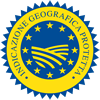Description
Ciliegia di Marostica PGI is a fresh cherry belonging to the species Prunus avium L., deriving from the following varieties: early-ripening Sandra and Francese, the latter deriving from the Bigareaux Moreaux and Burlat; mid-season Roana and early-ripening hard-skinned Romana; late-ripening hard-skinned Milanese, Durone Rosso (similar to Ferrovia), Bella Italia and Sandra Tardiva; Van, Giorgia, Ferrovia, Durone Nero I, Durone Nero II and Mora di Cazzano.
Production Area
The production area of Ciliegia di Marostica PGI is within the territory of the following municipalities: Salcedo, Fara Vicentino, Breganze, Colceresa, Pianezze, Marostica, Bassano, and parts of Schiavon, in the Province of Vicenza, in the Veneto region.
Production Method
Ciliegia di Marostica PGI is grown almost exclusively in hilly areas with fertile soil rich in potassium, which allows for the growth of a sweet and tasty product. Harvesting is carried out by hand, starting halfway through the first ten days of May for early-ripening fruit, and from the beginning of the last ten days of May for the late-ripening varieties. The fruit must be placed in containers with rigid sides, and immediately after harvesting they are carefully selected and placed in cool and shaded areas, thereby maintaining the fruit’s characteristics and allowing a longer shelf life.
Appearance and Flavour
Ciliegia di Marostica PGI is large and heart-shaped with a minimum diameter of 23 mm. The skin ranges from dark red to flame red in colour, depending on the variety. It has firm, juicy pulp, with a delicious full, sweet taste. It is a highly prized fruit from a nutritional and health viewpoint.
History
Cherry cultivation in the Marostica area began centuries ago; it is said that its history is linked to the “Chess Game”, an event which is still remembered today at the Regional Cherry Exhibition at the end of May. In 1454, when two gentlemen came to ask for the hand of his daughter, Taddeo Parisio, the governor of Marostica, decided to settle the matter with a game of real-life chess. The winner married the daughter and the loser her sister. On the day of the wedding, Taddeo Parisio ordered the plantation of cherry plants throughout the region to commemorate the happy event. In more recent times, cherry cultivation has acquired noteworthy commercial importance, so much so that at end of 1950s the first Conservation Consortium was established by Mason Vicentino, with the aim of managing and organising cherry production.
Gastronomy
Ciliegia di Marostica PGI can be kept in the refrigerator for a few days, after removing any damaged fruit. It is eaten fresh, but it can also be used in desserts, cakes, jams and Bavarian cream. It is especially indicated for preserving in grappa, alcohol or red wine. It is rarely used as an ingredient in cooking, although recently a few recipes combining it with meat have appeared, such as duck and Ciliegia di Marostica PGI, in which the cherries are added to the cooked meat in the oven, creating a kind of sauce.
Marketing
The product is marketed as Ciliegia di Marostica PGI and sold during the summer. The cherries belong to the First commercial category and must be packaged in suitable containers weighing a maximum of 10 kg. The contents of each container must be uniform, with cherries of the same variety and quality.
Distinctive Features
Ciliegia di Marostica PGI is a fruit with many beneficial properties. It is rich in vitamins, polyphenol and sugars that can even be consumed by diabetics.





























